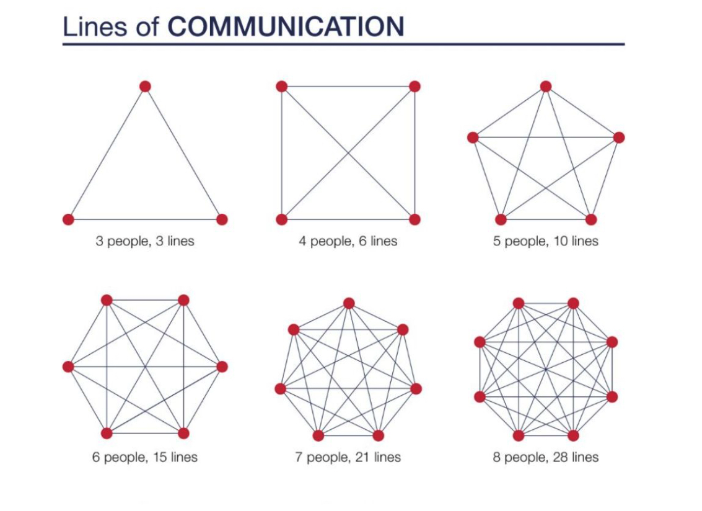
Agile government innovation: Tiny teams, mighty impact
As government agencies strive to drive innovation and deliver better services to citizens, many are embracing agile methodologies and experimenting with new structures like “tiny teams” — small, cross-functional teams that enable agility and collaboration. This first blog by Jaie Samson, Principal Delivery Manager at Zaizi, in a two-part series, explores our recent use of tiny teams and the rationale behind it.
This post isn’t to promote the “right” size of a team. It’s here to share learnings, reflections, results and insights gleaned into public sector digital delivery, where we’ve embarked on a transformative journey over the past four months.
Embracing agility and innovation, our small yet mighty teams — think Deadpool and Wolverine rather than the entire Avengers roster — recently delivered tangible outcomes for government clients through the Home Office’s Accelerated Capability Environment (ACE) framework.
We all know budgets are constrained, and there is a policy shift within government to reduce wasted money on large teams that do not deliver tangible outcomes. ACE fosters public-private collaboration and drives agile, mission-led innovation to rapidly deliver public safety and security solutions across government.
On some recent ACE projects, we’ve been working on short 4-8 week burst of rapid delivery, challenging and breaking the rhetoric of “it can’t be done” or “we need every profession represented to make this work.”
Unshackled by some of the usual bureaucratic constraints, tiny teams shift between extreme perspectives with the ease of Ant-Man shrinking and expanding. They flow fluidly between the broad strategic vista and the hyper-detailed operational view, while maintaining a consistent overall perspective.
Tiny teams – doing more with less
Here at Zaizi we have an awesome pool of talented digital professionals. During these rapid projects, we have internal end of week check ins. It enables us to pull on different DDaT profession views like product management, user experience, development and design to break any echo chambers, celebrate success, and share lessons. It also provides an area to ask for support, vent and increase our quality (we discovered through metrics and customer feedback that tiny team quality was setting new standards).
With a team as few as three members in some instances, our communication was not just streamlined but razor-sharp. Decisions were faster, whether hashed out on Slack or during quick 10-minute powwows. The small size meant everyone was on the same page quicker and could support each other. This created an energetic and positive environment with fewer administrative hurdles and more flexibility — remember the last time you went calendar-spelunking to book a 30 minute meeting for 8 people?

Set against a 20-minute sync with three people, where every minute counts (even more so over a short engagement), we found it paid dividends. Without filters between the team and the client, communication was smoother. Clients spoke directly to the individuals doing the work, with short feedback loops, and the workings on display as projects progressed. There was no fear, just trust, and prioritising individuals and interactions over processes and tools.
Bye-bye sprints, hello weekly missions!
Ok so, any time box, whilst not implied, will lean into sprint terminology. What made these experiments and deliveries sing was the clear scope (as with any project a bit of shepherding and anchoring happened).
But knowing the focus at the micro scale elevated members from being just ‘T-shaped’ to what I call ‘O-shaped’ — outcome orientated. While specialism is valuable, the main priority was to be aware of what needs to be done and how to deliver it with the highest possible quality in the shortest time frame — more on that in our second blog.
For the tiny team sprint pattern, we’re not confined to rigid roles like “Business Analyst” or “Solutions Architect.” We’re a versatile, cross-functional force, working together to deliver the highest possible quality sustainably.
The true strength lies in this almost raw power of collaborative unison. Like Ant-Man and The Wasp’s mastered psychokinetic link, tiny teams move as one unified organism, selflessly deferring to those best suited to lead at any given moment based on shifting needs. We do need experts and the right expertise in the driving seat at the right time, without a stop-start acting as a drag on momentum.
Of course, this intensity requires thoughtful shepherding and clear anchors. A tight rein on scope keeps our energy focused, preventing exhausting tangents. And focus on quality ensures our pace never undermines excellence.
DOWNLOAD EBOOK: How to overcome the inevitable challenges in government agile delivery
Green, Green, Amber — going in eyes open
Tracking delivery in the internal check-ins over six weeks, we saw the Red, Amber, Green (RAG) status pattern. What’s the amber status? PEOPLE! In a team of three, if one person can’t make it in (flu, lottery win, engineers working on the phone lines) you’re not just down to 66% team capacity: the foot comes off the accelerator and the delivery coasts, crawls or halts.
To mitigate this risk, we took these proactive steps:
- Prioritised open communication and collaboration
- Implemented thorough documentation practices to ensure knowledge sharing.
- Foster cross-training and skill-sharing within the team (adopted the O-shaped stance)
- Embraced agile methodologies for flexibility and adaptability.
It’s important to build teams that can maintain consistent delivery despite unexpected disruptions. Openly communicating capacity constraints sets realistic expectations and makes for a “no surprises” delivery process.
The support and teamwork across Zaizi has continued long since these commissions wrapped up. This really helped improve how we deal with the difficult, complicated problems that come up when digitally transforming and evolving public sector organisations. The public sector world is very complex, messy, and situations rarely have obvious black-and-white solutions.
This is no ordinary business model; it involves an entrepreneurial mindset. Whether battling mundane bureaucracy or tackling tough public sector challenges, tiny teams have shown us what’s achievable.
We’ve seen the approach to be efficient, cost effective, and demonstrably deliver quality outcomes to public sector clients. Embracing agility and innovation is crucial in today’s landscape — and this experimental approach enables just that.
We’ll delve deeper into the “how” — providing valuable insights and proven methods in the second part of this blog. So stay tuned for that! In the meantime, if you would like to know how to get cost-effective, tangible outcomes with tiny teams, get in touch.
-

Truth, trust and transformation — 4 key takeaways from Zaizi’s AI in government event
-

Zaizi talent shines at Computing DevOps Excellence Awards 2025
-

Advancing DevOps practices with AI —lessons from AWS re:Invent
-

Paris AI summit: Navigating the AI landscape and how SMEs can help UK government
-

Border Force wins Global Customs Innovation Award for ScanApp — a solution Zaizi helped build
-

How Zaizi’s user-centred approach won the trust of border officers
